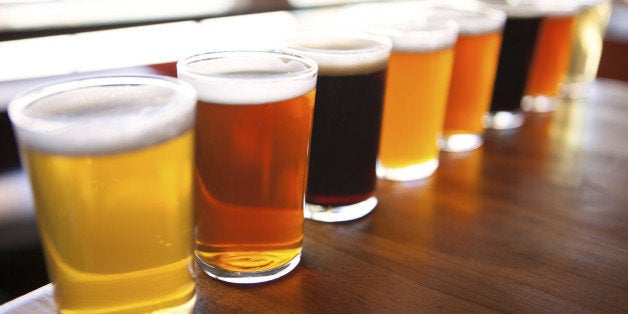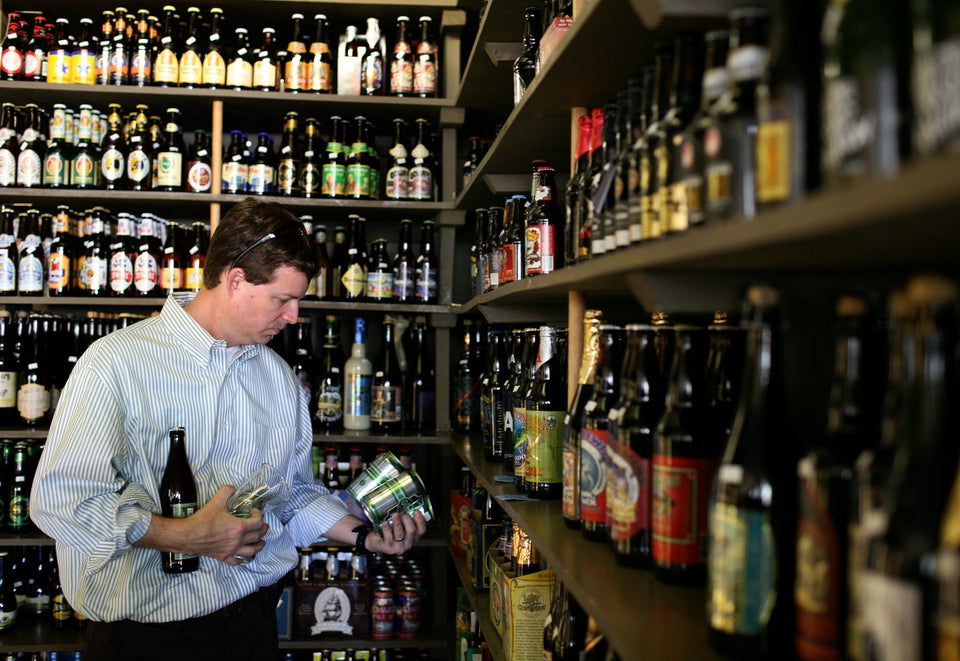
Craft beer companies across America are embracing a "less is more" attitude when it comes to the booziness of their brews.
This summer, the popularity of so-called "session beers" -- craft beers with an alcohol content that hovers around 5.5 percent or lower -- has been making waves in the industry as consumer eschew big, hoppy bombers with double-digit alcohol content for an easier drink.
"The return to session is a return to what we were doing beforehand," Adam Vavrick, beer manager for Chicago beverage depot Binny's told The Huffington Post. "We’ve gotten on the highway and gone 100 mph, but now we’re dialing it back -- and saving some gas."
Though session beers have always spiked in popularity during the summer, popular regional breweries like Founder's (Grand Rapids, Michigan), Deschutes Brewery Inc. (Bend, Oregon) and Lagunitas Brewing Co. (Petaluma, California) are now are making session beers year-round, according to Crain's Chicago Business.
"Really strong beers are great when it’s cold outside and you’re hunkering down next to a fireplace or a radiator and just trying to forget the cold and the troubles in your life," Austin Harvey, director of beer at Chicago-based craft beer cafe Beermiscuous told HuffPost. "But summer also exists. And heavy beers just aren’t as pleasurable to drink.
Harvey said the preference for the "lower gravity" beers signals a larger change in the craft beer world.
"You’re seeing a widening of the audience of craft beer," Harvey said. "It’s easiest to get [consumers] into something when it’s not as overwhelming -- not just in the flavor department but also alcohol-wise. Breweries are trying to make the audience for craft beer bigger while also providing something the average craft beer fan can drink every day."
Getting a greater number of beers into the customers' bellies is a savvy economic move for breweries, and Harvey adds that session beers are also "a little cheaper" to make, since fewer key ingredients in the fermentation process are needed.
"It's really the market maturing," Vavrick said. "There’s a reason the macro-lagers became light and easy-drinking alcohol: You want to be able to sit down with your friends and have an easygoing drinking experience, and having more than one.”
Consumers ages 35-49 make up 41.5 percent of the craft beer-drinking market, followed by 26-34-year-olds, who accounted for 26.4 percent, according to figures from The Journal of Consumer Marketing and The British Food Journal.
"Folks who have been getting into craft beer for a while are getting older," Harvey said. "When you sit down to a craft beer that’s lower in alcohol during dinner, you’re not going to embarrass yourself in front of your kids or your spouse."
Though craft beers sales account for a roughly 7.8 percent of the U.S. beer market, the craft segment is growing as the overall beer market slows.
“Companies are trying to attract an audience beyond the beer nerd consumer of a few years ago,” Vavrick said, adding, "The American palate is also changing. They don’t like [beers] as bland or sweet; there’s a desire for more flavor, maybe something a little rougher around the edges and maybe a taste that links more to the agriculture around it.”
Though there will always be a place for mass-market brews and light beers "consumed ice cold and slammed at a ballpark," Vavrick said session beers at the very least keep beer fans in the game instead of under the table.
“Those of us fighting the good fight about craft beer are also trying to class up the joint. Especially those of us who are fans of beer and food pairings, you need a beer that you can actually keep drinking for several courses."
